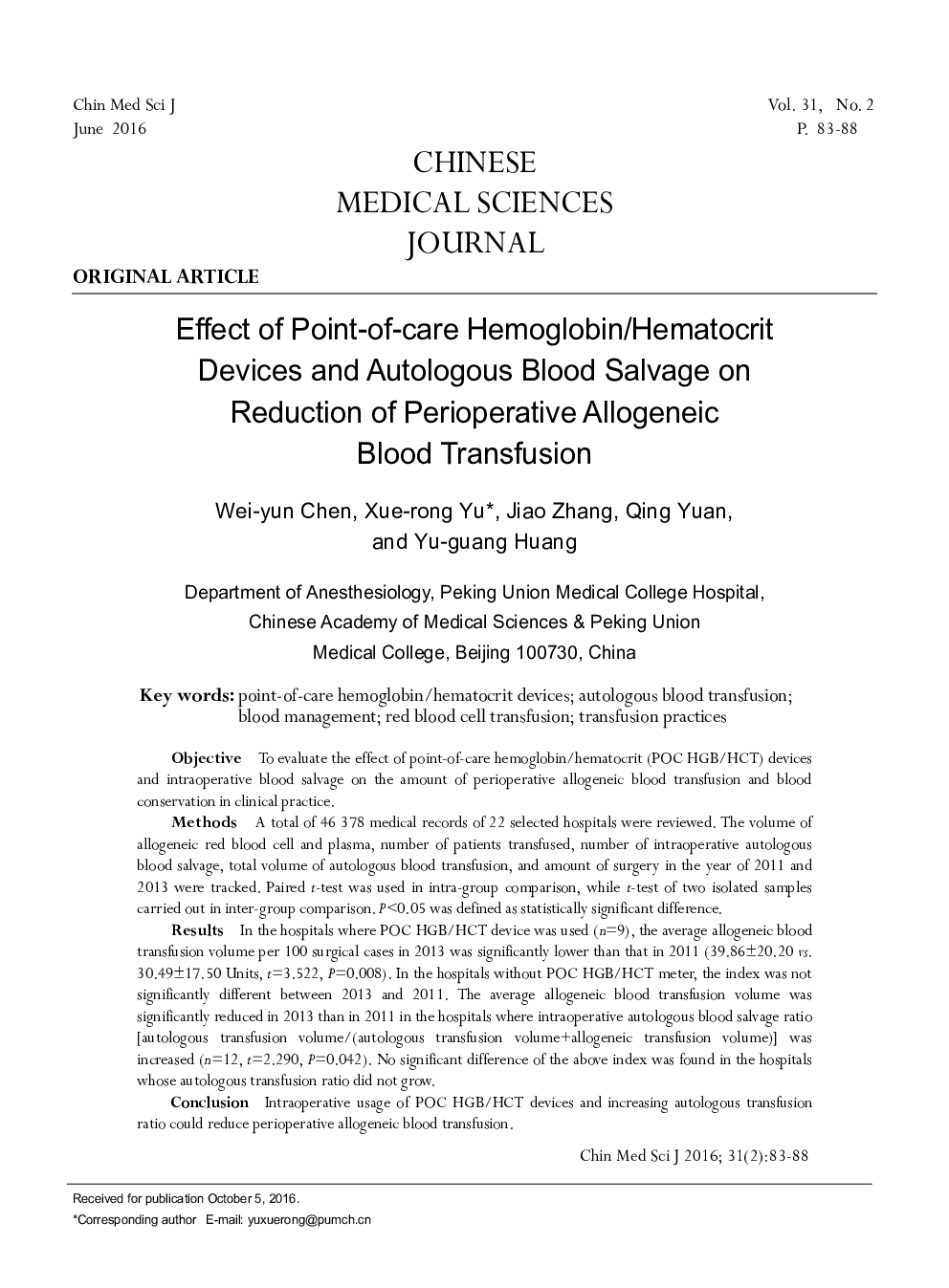| Article ID | Journal | Published Year | Pages | File Type |
|---|---|---|---|---|
| 3459402 | Chinese Medical Sciences Journal | 2016 | 6 Pages |
ObjectiveTo evaluate the effect of point-of-care hemoglobin/hematocrit (POC HGB/HCT) devices and intraoperative blood salvage on the amount of perioperative allogeneic blood transfusion and blood conservation in clinical practice.MethodsA total of 46 378 medical records of 22 selected hospitals were reviewed. The volume of allogeneic red blood cell and plasma, number of patients transfused, number of intraoperative autologous blood salvage, total volume of autologous blood transfusion, and amount of surgery in the year of 2011 and 2013 were tracked. Paired t-test was used in intra-group comparison, while t-test of two isolated samples carried out in inter-group comparison. P<0.05 was defined as statistically significant difference.ResultsIn the hospitals where POC HGB/HCT device was used (n=9), the average allogeneic blood transfusion volume per 100 surgical cases in 2013 was significantly lower than that in 2011 (39.86±20.20 vs. 30.49±17.50 Units, t=3.522, P=0.008). In the hospitals without POC HGB/HCT meter, the index was not significantly different between 2013 and 2011. The average allogeneic blood transfusion volume was significantly reduced in 2013 than in 2011 in the hospitals where intraoperative autologous blood salvage ratio [autologous transfusion volume/(autologous transfusion volume+allogeneic transfusion volume)] was increased (n=12, t=2.290, P=0.042). No significant difference of the above index was found in the hospitals whose autologous transfusion ratio did not grow.ConclusionIntraoperative usage of POC HGB/HCT devices and increasing autologous transfusion ratio could reduce perioperative allogeneic blood transfusion.
